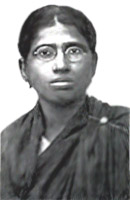 Women in the Non Cooperation movement participated in large numbers. The Non-Cooperation Movement began with members of the reformed councils withdrawing from these councils. The next step was to boycott the law courts and schools. Congress accepted this program at a special session held on August 20, 1920. This event was a victory for the pursuits of Mahatma Gandhi and promised a more active role for women than the one offered by the Swadeshi vow. Gandhi`s appeal went beyond "respectable" women to women marginalized by middle-class society. He had a reputation as a political leader who believed women counted and had faith in their capacity to help the nation and themselves.
Women in the Non Cooperation movement participated in large numbers. The Non-Cooperation Movement began with members of the reformed councils withdrawing from these councils. The next step was to boycott the law courts and schools. Congress accepted this program at a special session held on August 20, 1920. This event was a victory for the pursuits of Mahatma Gandhi and promised a more active role for women than the one offered by the Swadeshi vow. Gandhi`s appeal went beyond "respectable" women to women marginalized by middle-class society. He had a reputation as a political leader who believed women counted and had faith in their capacity to help the nation and themselves.
Congress declared April 6-13, 1921 as Satyagraha week, and women interested in politics held meetings to show their support. At one of the several meetings which Sarojini Naidu addressed, women decided to form their own political organization, Rashtriya Stree Sangha (RSS), an independent women`s organization, which required its members to join the District Congress Committee. Speaking to this group in August, Urmila Devi, the widowed sister of the Bengali Congress leader C. R. Das, urged women to be ready to leave their homes to serve the country. By November, 1,000 Mumbai women were demonstrating against the Prince of Wales` visit to India.
In Bengal, events took an even more dramatic turn. C. R. Das, the most important Congress leader in eastern India, decided Congress volunteers should sell khaddar (homespun cloth) on the streets of Kolkata to test the government`s ban on political demonstrations. The first batch of volunteers, including C. R. Das`s son, was arrested, then his wife, Basanti Devi, his sister, Urmila Devi, and his niece, Miss Suniti Devi, took to the streets and were arrested. When word of their arrest spread, a huge crowd of Marwaris, Muslims, Sikhs, coolies, mill hands and school boys milled around until the police released the women. On December 8, 1921, the whole city was in commotion. As for the women from the Das family, they resumed picketing cloth shops and selling khaddar joined by numerous lady volunteers, especially Sikh ladies. Kolkata students came out in hundreds, joined the prohibited volunteer corps and marched out with khaddar on, seeking imprisonment.
On that day alone, 170 protesters were arrested. Gandhi immediately recognized the value of having women form picket lines. Writing in Young India he urged women from other parts of the country to follow the brave example of Bengali women. The arrest of respectable women was viewed as an appropriate tactic to shame men into joining the protests. Less predictable, and certainly not an intended outcome, was the way these arrests affected other women. At the All-Indian Ladies Conference in Ahmedabad, 6,000 women listened to Bi Amma, the mother of Shaukat Ali and Muhammad Ali, leaders of the All-India Khilafat Committee. These were Gandhi`s allies. Bi Amma urged women to enlist as Congress volunteers and, if their men folk were arrested, to join the picket lines and keep "the flag flying."
Women from all provinces of British India stepped forward in response to Gandhi`s call. In East Godavari District, a group of women gathered to meet and listen to Gandhi. Duvvuri Subbamam, a woman attending this assembly, joined the freedom struggle at this time and resolved to form a women-only cadre of Devasevikas (god-devoted servants). Learning that he would visit Kakinada, also in East Godavari District in April 1921, a twelve-year-old girl, Durgabai (later Durgabai Deshmukh) wanted local Devadasis to meet him. In preparation for Gandhi`s` visit, Durgabai visited the Devadasis to tell them about Gandhi and then asked the organizers if a separate meeting could be arranged. Congress officials jokingly replied it could be arranged if she raised Rs.5, 000 for the Mahatma. The Devadasi collected the money and Durgabai obtained permission to hold the meeting in a school compound. When Gandhi arrived, there were at least 1,000 women waiting to meet him. He talked to them, with Durgabai translating, for over an hour. The women listening took off their jewellery and added another Rupees 20,000 to the purse.
As Gandhi travelled and spoke, he urged women to boycott foreign cloth, spin, and join in public defiance of British laws. At the same time, women`s organizations were petitioning the British Government for the franchise. Sarala Devi Chaudhurani, Muthulakshmi Reddy, Amrit Kaur and many other women who followed Gandhi did not abandon the franchise issue. They were impressed with his empathy for women, personally committed to his vision, but unwilling to give up their work on behalf of civil rights. Gandhi was able to live with their ambiguity. Gandhi traversed through the entire country, convincing women about the potentials inherent in them. Women`s rise to prominence over the tide of nationalism became the order of the day, during the non-cooperation movement. Swarup Rani, Motilal`s wife, and Nehru`s mother, Rajkumari Amrit Kaur, Mrs. Vijay Lakshmi Pandit began to establish their sway since and came to the forefront of the political sphere following the Non-cooperation Movement.






































